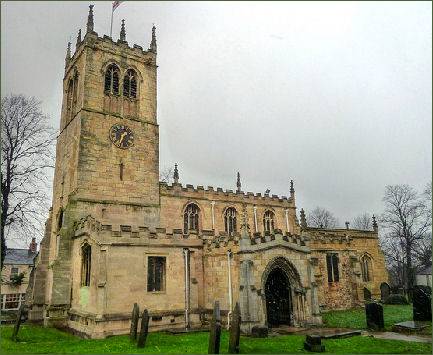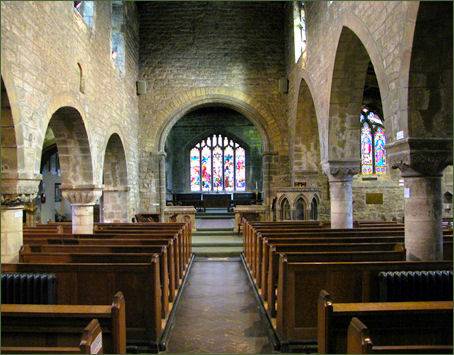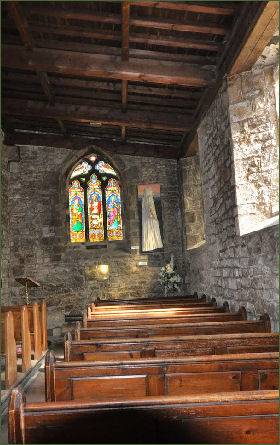St. Peter's Church, Conisbrough
OS grid reference:-
Described as the oldest building in South Yorkshire, the Church of St. Peter stands on Church Street, set on the highest part of the town of Conisbrough. Dating back to the Saxon era (c740-750AD), the building served as a Minster, or 'mother church', to around seventeen other churches from Harthill in the west to Goole in the east.


The last Anglo-Saxon lord of Conisbrough was Harold Godwinson, later King Harold II. At the time of the Domesday Book there was a church and a priest here, after the Norman conquest the manor had come into the hands of the Warenne family. Imposing Conisbrough Castle was built in stone by Hamelin Plantagenet, Henry II's illegitimate half brother and husband of the wealthy heiress Isabella de Warenne and the castle builders and church builders surely influenced one another. The church was given to Clunaic Lewes Priory by the Warennes.
 For 400 years the church remained in its original form. From circa 1100 the building was extended and expanded until circa 1450 when the building became much as we see it today.
For 400 years the church remained in its original form. From circa 1100 the building was extended and expanded until circa 1450 when the building became much as we see it today.
There are many interesting features for the visitor to see. These include the 'hagioscope' and 'lychnoscope' - two squints of different ages. There are also two early Medieval grave slabs, which once made up a tomb-chest. Although these are not pre-Conquest, they are an excellent set of carved stones, said to be the finest funery slabs in England.They date from the eleventh to twelfth century and are very richly carved. St George is depicted fighting a dragon, a human head with open mouth swallowing snakes (or snakes coming from his mouth); also warriors in combat, winged beasts, birds, foliage, zodiac signs and a bishop holding his crozier, make up just some of the decoration.
Built into the wall of the south porch is a piece of Romano-British carving. It is undecided if this is intended to depict the Virgin and Child or St Peter with the key of Heaven. Below it is a carved slab of which the date is unknown. The carved stone font dates from around 1400. As well as the usual shields this also has a carved figure of the Risen Christ stepping out of the tomb and another of the sitting Christ in Majesty.
The pillars have carved capitals, all of which differ. The one at the back of the north arcade is unusual and is believed to be a piece of recycled Roman masonry from a nearby villa, with the figures of Roman soldiers. Their heads were sadly broken off by Puritan iconoclasts. The building also contains umbrys and piscinas of different ages and styles as well as a fifteenth century font and two thirteenth century stained glass windows.The half of a tomb monument at St Peter's is thought to commemorate the 3rd Earl Warenne who died in 1148.
Inside the church is a twelfth century tomb chest mentioned by Sir Walter Scott in the notes to his novel 'Ivanhoe'. Peter Langtoft, writing in the thirteenth century, claimed that King Egbert of Wessex had been received at "Burghe Conane", which is often identified with Conisbrough.
A major restoration was carried out in the nineteenth century. Walls were stripped down to the bare stonework and many wall paintings were lost. The north aisle was rebuilt and extended and a organ chamber added. The vestry was removed. A new tall arch gave entry into the base of the tower and a stone rood screen base was built across the chancel. The stone pulpit dates from then. The wooden pews are tentieth century and are the work of Robert Thompson, the 'Mouseman of Kilburn'. His signature mouse can be found throughout the church.
The remains of an ancient preaching cross in the churchyard probably predates the church.
Abbeys and Churches of Yorkshire
Historic Buildings of Yorkshire
